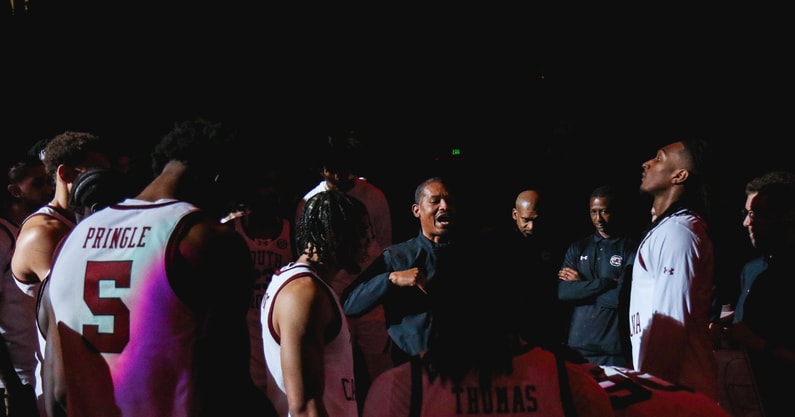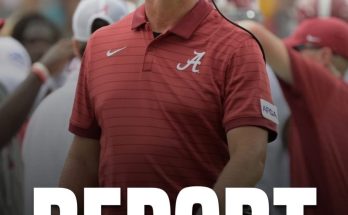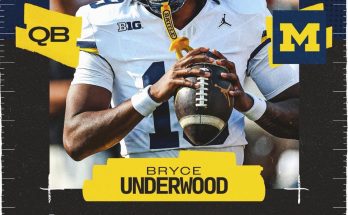In the unforgiving world of college basketball, results are king. And for the South Carolina Gamecocks, the 2024-25 season was a sobering reminder of just how steep the climb back to national relevance can be. With a final record of 12-20, the Gamecocks fell short of expectations, even the modest ones. Now, ESPN has weighed in with a stinging end-of-season evaluation, giving South Carolina one of the lowest grades in the Southeastern Conference—and among the Power Five programs as a whole.
The criticism, while harsh, is difficult to argue with. South Carolina didn’t just lose games; they lost them in ways that suggested the program remains years away from turning the corner. Whether it was inconsistent guard play, lapses in defensive effort, or an overall lack of identity on both ends of the court, the Gamecocks failed to establish any real momentum throughout the season.
It wasn’t supposed to be this bleak. After a modestly promising campaign the year prior under head coach Lamont Paris, there was hope in Columbia that the program was beginning to stabilize. Paris was entering his third year with the program, and expectations—while not through the roof—centered around at least breaking even and flirting with an NIT berth. That didn’t happen. Instead, South Carolina limped through non-conference play, never found their footing in the SEC gauntlet, and ultimately ended the season as an afterthought in the college basketball landscape.
ESPN’s grade? A D+. And according to their breakdown, even that might have been generous.
The network’s analysis focused on several core issues, most notably a complete lack of offensive identity. South Carolina ranked near the bottom of the SEC in nearly every major statistical category—points per game, field goal percentage, assists, three-point shooting. Too often, possessions felt disjointed and directionless. There was little ball movement, few attempts to establish a post presence, and an alarming tendency to settle for contested perimeter jumpers.
What made it worse was that defense, typically the hallmark of struggling teams hoping to hang around in games, wasn’t much better. The Gamecocks were routinely out-rebounded, gave up far too many second-chance points, and lacked the defensive communication necessary to compete with more disciplined and physical teams. South Carolina allowed over 75 points per game during SEC play—a brutal stat for a team that struggled to score 65 on most nights.
From a talent perspective, ESPN’s report suggested South Carolina simply wasn’t equipped to compete with the upper half of the SEC. The roster was a patchwork mix of young prospects, inconsistent upperclassmen, and a few transfers who failed to make the impact that was expected of them. It was a group that lacked a true go-to scorer, reliable floor general, or interior enforcer. In other words, South Carolina lacked stars—and in today’s college basketball climate, that’s a death sentence.
Perhaps most troubling in ESPN’s evaluation was the concern about the program’s trajectory. Lamont Paris has now completed three full seasons at the helm, and while it’s fair to acknowledge the rebuilding job he inherited, the lack of measurable progress is hard to ignore. In Year 1, South Carolina went 11-21. In Year 2, they improved slightly to 14-18. But Year 3’s 12-20 finish feels like a regression, especially considering the continuity on the roster and a full offseason to build.
Recruiting hasn’t provided the jolt fans hoped for either. While Paris has landed a few intriguing pieces, including a top-150 wing from Georgia and a solid JUCO transfer, the Gamecocks have struggled to crack the top 30 in recruiting rankings. In a league as competitive as the SEC—where programs like Kentucky, Alabama, Auburn, Tennessee, and Arkansas reload every year with blue-chip talent—simply treading water isn’t good enough.
South Carolina’s struggles on the recruiting trail are partly due to a lack of NIL firepower and limited recent success to sell. Unlike football, where tradition and facilities can sometimes outweigh recent results, basketball recruiting has become increasingly results-driven. High school stars want to play in March. They want the exposure. They want to be developed into NBA players. At the moment, South Carolina can’t promise any of that.
The Gamecocks haven’t made the NCAA Tournament since their magical Final Four run in 2017 under Frank Martin, and that now feels like a distant memory. Since then, the program has failed to make a single postseason appearance, and the fanbase has grown weary of the lack of progress. Home attendance dropped significantly this season, and the once raucous Colonial Life Arena often felt lifeless by February.
All of this has raised legitimate questions about the direction of the program and whether Paris is the right man to lead it. To be clear, ESPN didn’t call for his firing in their assessment, but the language used—phrases like “uncertain future,” “lack of developmental momentum,” and “waning enthusiasm”—paint a picture of a coach on the hot seat entering Year 4.
Paris, for his part, remains optimistic. In his end-of-season press conference, he emphasized the importance of “staying the course,” citing the challenges of building a program in the current era of player movement and NIL chaos. He also noted that several underclassmen had shown signs of growth, and he spoke confidently about landing impact transfers in the offseason. But fans have heard all that before.
At some point, it comes down to results. SEC basketball has become a war zone, with elite coaches and NBA-bound talent dotting nearly every roster. South Carolina can’t afford to fall further behind. The athletic department has voiced public support for Paris—at least for now—but another sub-.500 season could force their hand. Buyouts are expensive, but so is mediocrity.
To be fair, South Carolina isn’t the only program struggling in the SEC’s arms race. Vanderbilt also received poor marks from ESPN, and even once-proud programs like Georgia and Missouri have battled inconsistency. But what separates South Carolina is the lack of upward trajectory. At least those other teams have shown glimpses—occasional big wins, flashes of individual brilliance, or strong recruiting classes. The Gamecocks, on the other hand, seem stuck in the mud.
There are a few bright spots. Freshman guard Elijah Crawford showed some promise as a slasher and on-ball defender. Junior forward Josh Gray was a force on the boards in certain matchups, and wing Myles Stute flashed scoring potential when healthy. But none of these players have shown enough to be considered foundational stars around which a program can be built.
In the transfer portal era, rosters can flip quickly, and perhaps Paris will work some offseason magic. But until South Carolina brings in at least one or two legitimate game-changers—players who can take over games and attract national attention—progress will remain slow. ESPN’s grade reflects that brutal truth. You can’t win in the SEC with grit alone. You need talent. You need depth. And you need direction.
The path forward is filled with uncertainty. Paris and his staff must nail the next two recruiting classes. They must find players who not only fit the system but can elevate it. They must find a way to energize the fanbase again, to bring life back to the Colonial Life Arena and reintroduce excitement to South Carolina basketball. That won’t be easy. Not with the SEC’s powerhouses only getting stronger. Not with NIL and the transfer portal reshaping the landscape. And not with the growing pressure of fan and media scrutiny breathing down their necks.
In the end, ESPN’s D+ grade is more than a number. It’s a wake-up call. It’s an indictment of a program that has slipped into irrelevance and hasn’t shown a clear path back. The time for patience is running out in Columbia. The 2025-26 season may not be do-or-die for Lamont Paris, but it’s as close as it gets. South Carolina basketball needs a reset, a resurgence, and most of all—a reason for hope. Because if next year looks anything like this one, that grade might not just drop to an F. It might signal the end of an era.



